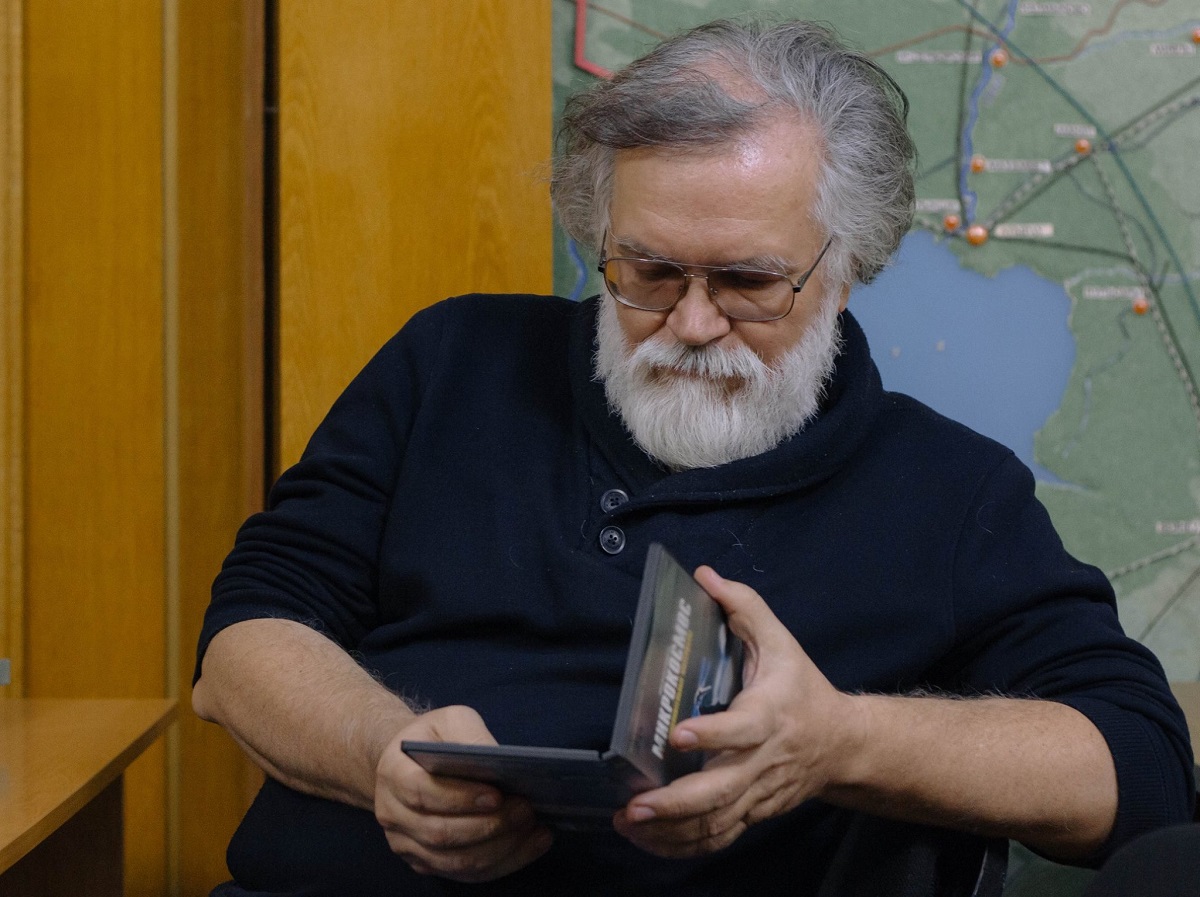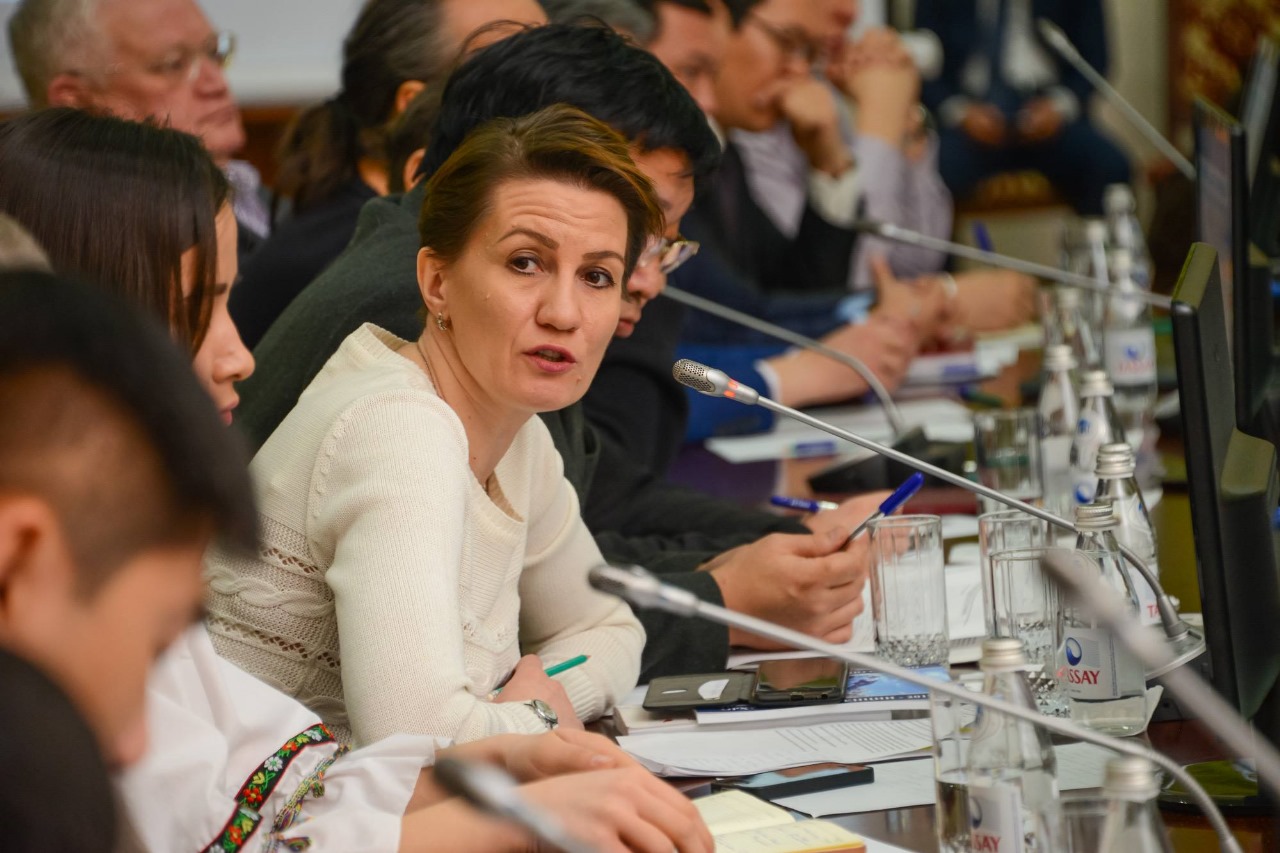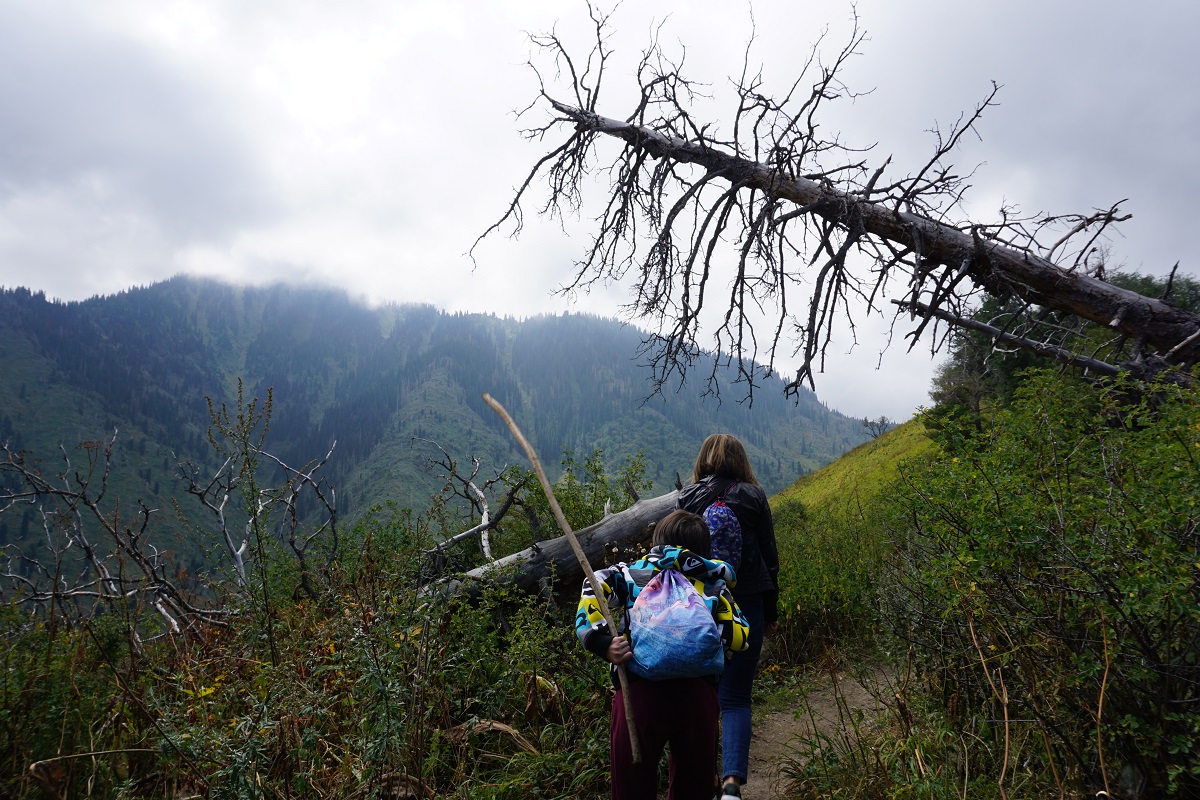Covid has changed the attitude to travelling within Kazakhstan. When the border was closed during the quarantine, Kazakhstanis discovered holiday destinations within the country. The unprecedented rush of visitors happened in all popular locations of Kazakhstan. However, the tourism turned out to have another, unflattering side, i.e. rubbish, vandalism, fires.
Kazakhstan has 14 national parks, 10 nature reserves and seven wildlife reserves. The most popular among visitors are national parks. In 2023, according to the national company ‘Kazakh Tourism’, over 2.4 million people visited national parks. The significant increase in the number of tourists has been observed in the last five years. Moreover, the attendance rate went up the most in the Ile-Alatau State National Nature Park (SNNP; 775,264 visitors in 2023), SNNP ‘Kolsai Lakes’ (244,733), Baianaul SNNP (159,127), Charyn SNNP (131,264), Sairam-Ugam SNNP (119,614).

The growth of domestic tourism continued after the pandemic years. The influx of tourists from abroad also increased due to the visa-free regime with particular states. For example, according to the Ministry of Tourism and Sport, the number of visitors from China increased twelvefold, from India – threefold in 2023 compared to 2022.
Beware of tourists!
The growth of tourism is a clear benefit to the national image and economy. However, since the main points of interest in Kazakhstan are mainly national nature parks, their tourist capacity continues to increase.
According to ecologists, the recreational load on national parks is huge and damages the environment.

“The man-caused load is exceeded greatly in many locations. Thus, the vegetation in the Valley of Castles in Charyn National Park has been destroyed by 70-75 per cent. A motorway has been built in the bottom of the Valley of Castles. It is practically impossible to take a picture of a beautiful canyon landscape now. There are posters, benches, trash bins, structures everywhere,” said Sergei Kuratov, chair of the ecological society ‘Zelenoye Spaseniye’ [Green Recovery].
The situation gets worse because not all visitors can follow the rules of visiting specially protected natural areas (SPNA). Recently, the Burabai National Park announced cleaning of rocks from inscriptions left by visitors. The National Park had to purchase special equipment to clean the rocks by dry vacuum blasting not to cause damage to the environment. These works will take a few years as almost all (!) rocks along lakeshores in Burabai have inscriptions on them.
Another eternal problem related to tourism in national parks is litter. Despite the fact that a portion of the environmental fee charged upon entry to the SPNA is paid for clean-up and site improvements, the problem of littering is still relevant.
“Our organisation has repeatedly raised the question of prohibiting the use of single-use plastics at SPNAs. However, it has not yielded any results so far. We can see a lot of plastics almost in all sites of mass tourism, i.e. dump piles, overloaded dumpsters, roadside litter, etc. It all can be characterised as the result of overtourism,” Sergei Kuratov said.
Man vs Nature

“Biodiversity is getting worse,” Svetlana Spatar, project manager of the environmental society ‘Zelenoye Spaseniye’, certified guide, added to the ‘deplorable list’. “Vegetation at popular routes is trampled down, soil cover is degraded. The risk of fires increases due to fires made by tourists. There is the increase in noise exposure, which causes animal disturbance. Car tourism and motorcycle touring also have negative impact on ecosystems of SPNAs.”
According to Spatar, declining biodiversity is related to construction and development of the tourism infrastructure – new motor roads, car parking areas, hotels, restaurants, power transmission lines, pipelines.
In Almaty region, the significance of national parks grows for another reason. “They are the main and reliable ‘providers’ of quality water and clean air for millions of people,” Spatar said.
The Ministry of Ecology and Natural Resources of the Republic of Kazakhstan confirmed to CABAR.asia that SNNPs located in the vicinity of metropolises have recently had visitation rates higher than those specified for recreational loads. Therefore, the unregulated flow of visitors lays a great burden on ecosystems and biodiversity.
“Therefore, SNNPs currently use a tourist and visitor flow regulation system based on the recreational capacity of natural areas, develop tour itineraries and trails with their further improvement, ensure safety of tourists and visitors, create the relevant infrastructure for the travel and recreational activity, and carry out works to improve the aesthetic properties of tour itineraries and trails,” according to the ministry of ecology.
Clean tourism
Elimination of the signs of low level of environmental culture should be addressed by increasing accountability for ‘environmental’ offences and changing thinking patterns.
Thus, the Code of Administrative Offences was complemented in 2022 by the new article 380-1, which covered the cases of violation of regimes in SPNAs. Fines for relevant administrative offences were increased. Thus, the fine was increased from two to five minimum calculation indices (in 2024, 5 minimum calculation indices (MCI) were 18,460 Kazakh tenge, or 41 dollars) for the violation of stay in particular types of SPNAs.
“All SNNPs carry out regular raids to detect administrative offences related to the compliance with health and safety rules in SPNAs. Moreover, the pilot programme on collection, sorting and removal of household waste was launched this year by SNNPs jointly with ‘Zhasyl Damu’ (state organisation responsible for implementation of the extended producer responsibility principle – Editor’s note) in ‘Kolsai Kolderi’ SNNP (Kolsai Lakes) and ‘Sharyn’ SNNP (canyon Charyn),” according to the ministry of ecology.
The purpose of the pilot programme is to raise the level of environmental culture and environmental awareness of SNNP visitors, to create conditions for the positive patterns of behaviour in relationship with the environment by developing, implementing and promoting the new concept of visitors’ attitude to nature parks, i.e. “clean tourism.” The concept provides for setting the balance between the capacity to hold more tourists and the preservation of unique natural complexes.
If the pilot is successful, the experience will be scaled to other SNNPs.
Reduce the load
According to the national company ‘Kazakh Tourism’, the shift to environmental planning and active use of green technologies started in 2019 in national parks of Kazakhstan once the concept of ‘ecotourism’ was introduced. Ecotourism implies minimum negative influence on the natural and sociocultural environment, and focuses on preservation and maintenance of the environment.
According to the ministry of ecology, ecotourism development projects were implemented in SNNPs Ile-Alatau, ‘Altyn-Emel’ and Charyn. All SNNPs have visit centres, glamping, small architectural forms and equipped tour itineraries. Construction of the visit centre in Butakovka (a gorge near Almaty) will be completed in 2024.
According to ‘Kazakh Tourism,’ the American experience of ecological management of national parks applies to all implemented projects in SNNPs. Currently, the country has over 40 glamping sites and 16 visit centres, seven of which are located in the territory of national parks. Among other things, visit centres provide information about eco-trails to tourists.
Also, according to ‘Kazakh Tourism,’ works on introduction of sustainability principles were intensified during construction of green hotels in Katon-Karagai, Almaty and Akmola regions, solar panels were installed in national parks Charyn and ‘Altyn-Emel.’ Among other infrastructure objects, green buses were introduced on the tour itinerary Shymbulak (a mountain resort near Almaty).
All these measures are expected to reduce the recreational load on national parks. However, experts doubt that the measures taken are highly effective.
Three issues of SPNAs
Sergei Kuratov names three main issues of SPNAs.
“Firstly, the law on SPNAs is not in compliance with the international conventions ratified by Kazakhstan. Our legislation contradicts the requirements of the Convention Concerning the Protection of World Cultural and Natural Heritage. It creates serious problems for managing Kazakhstan-based SPNAs that are on the UNESCO World Heritage List,” Kuratov said.
Secondly, the existing legislation is poorly observed.
“Moreover, the main lawbreakers are… state agencies,” Kuratov said. “Thus, the Supreme Court issued a decision in our organisation vs. the akimat (mayor’s office) of Almaty on May 31, 2023. The action was brought because the akimat failed to establish the protective zone along the border of the Ile-Alatau National Park for 17 years from the direction of Almaty. The Supreme Court bound the akimat to establish the protective zone.”
One year passed, according to Kuratov, but the Supreme Court’s decision was not enforced. However, according to the speaker, akimat officers constantly speak about the need to develop tourism, to comply with the law, to get it under control.
“Thirdly, the SPNA regime is poorly observed,” Sergei Kuratov said. “We can see it in the continuation of housing development in the regional park Medeo and the area of Ile-Alatau National Park. Development leads to the fact that access to rivers, trails has been blocked in some places, which limits access of tourists to natural sites.”
Moreover, so many ruins have emerged in the park. Some of them are abandoned structures of the Soviet time, but many of them emerged relatively recently.
“The attempts of our organisation to raise a question of demolition of the ruins, which threaten the lives of national park visitors, have been insignificant so far. The ruins keep on ‘decorating’ the national park,” Kuratov said.
He also said that SPNA lands continue to be transformed into reserve lands. A vivid example is the Aksai Gorge of the Ile-Alatau National Park, where over 12 thousand trees were cut down on the pretext of the need to build the conduit in the transformed area along the river.

“The statements claiming that SPNAs are managed with the use of the American experience is contrary to the fact, to put it mildly. A simple example is that our organisation has repeatedly raised the question of establishment of an institute of rangers in national parks to use the American experience. It is them, not foresters, who must maintain control in SPNAs. They could be rescuers and guides, and the ones who fight poaching,” Kuratov said.
According to him, the ranger issue has been discussed for 15-20 years but nothing has changed.
“We believe that the measures to reduce man-caused loads on SPNAs taken by state bodies are clearly insufficient,” the expert summarised.

